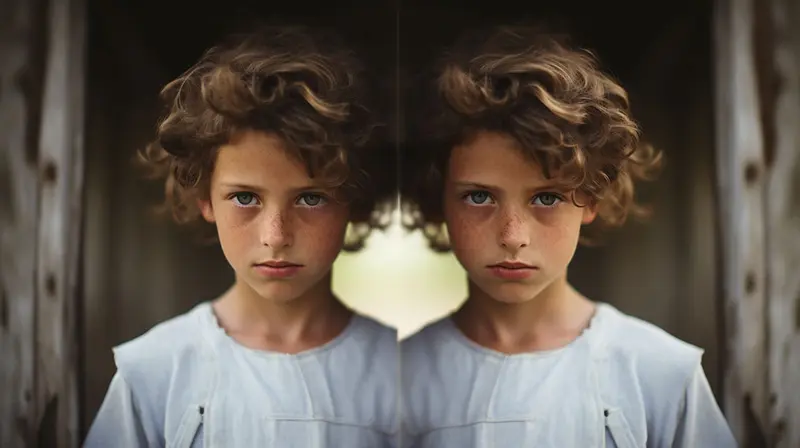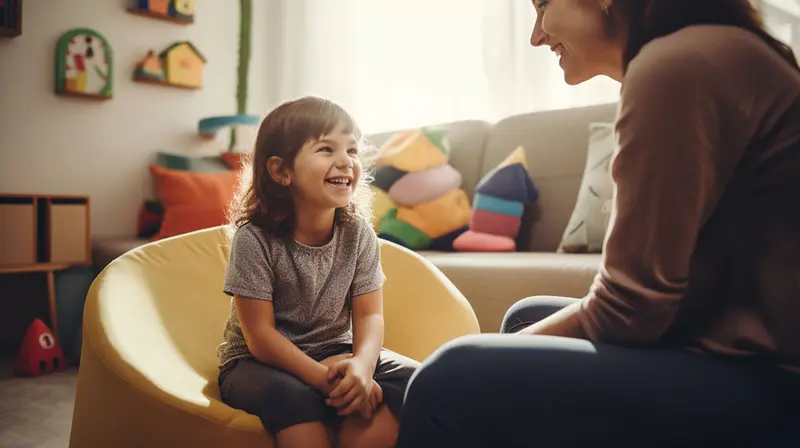When children face fears, how do we help them feel safe? This article breaks down the roots of childhood fears and shares targeted ways for parents to offer support and build resilience in their young ones.
Key Takeaways
- Childhood fears are normative, develop predictably with age, and are influenced by both genetic and environmental factors, becoming more complex as children grow.
- Anxiety disorders in children can manifest as separation anxiety, social anxiety, and panic attacks, and may require recognition of symptoms like extreme worry, physical symptoms, or behavioral changes for diagnosis.
- Effective strategies for supporting children with anxiety include validating their fears, encouraging open communication, and teaching them coping strategies, with professional treatments like CBT or medication available if needed.
Childhood Fears and Their Development

Childhood is a time of exploration, discovery, and, yes, fear. Common childhood fears such as fear of the dark, animals, and strangers are a normal part of a child’s development. They help children learn caution and adapt to new situations. These fears typically develop in a predictable pattern, with a child’s phobia of darkness appearing as one of the earliest.
Age-specific Fears
Fear evolves as a child grows. For instance, infants around 8–9 months old begin to experience stranger anxiety as they start to recognize familiar faces and feel scared by new faces, which can be considered a feared object in their perception.
As children grow older, their child’s fear becomes more complex and reality-based, such as their child’s fears of harm or experiencing natural disasters, which can lead to phobias in children and intense fear.
Environmental and Genetic Factors
It’s not just age that influences a child’s fears. Genetic factors contribute significantly to the development of anxiety disorders, which can manifest as extreme or persistent fears in children. Interestingly, non-shared environmental influences, distinct from family and shared environmental factors, also play a key role in activating anxiety symptoms.

Recognizing Symptoms of Anxiety Disorders
Recognizing the signs of anxiety disorders in children is the first step towards helping them manage their fears. Anxiety disorders often involve separation anxiety, social anxiety, and panic disorder, with symptoms mirroring those seen in adults.
Emotional and behavioral changes, such as extreme fear, worry, and alterations in sleep, eating, mood, and typical activities or routines, can also indicate an anxiety disorder.

Separation Anxiety
Separation anxiety is a common issue in younger children, manifesting as distress during periods of separation from their primary caregivers, and even physical symptoms such as stomachaches and headaches. This type of anxiety can be particularly intense during times like being left at daycare or at bedtime, potentially leading to refusal to sleep alone, nightmares about separation, and excessive worry when apart from home or family members. In more severe cases, this condition may be diagnosed as separation anxiety disorder.
Social Anxiety
Social anxiety disorder is another prevalent issue among older children and teenagers. They often worry about fitting in, being judged, and maintaining peer relationships. This anxiety can lead to avoidance of certain situations and retreat from social interactions.
Panic Attacks
Panic attacks, though more common in teenagers, can occur in children of any age. These are sudden bouts of anxiety that are characterized by physical symptoms such as trembling, a racing heart rate, and shortness of breath. A single panic attack can be particularly terrifying for children as the intense nature of the symptoms can make them feel as if they’re experiencing a heart attack or losing control.
Supporting Your Child Through Fearful Situations

Recognizing and understanding a child’s anxiety, childhood fears, and anxiety disorders is a vital part of parenting, but knowing how to support your child in these instances is also key. The way parents handle their own anxieties can significantly influence how their children cope with fears and anxieties.
We will explore three strategies that can aid your child: validation and reassurance, fostering communication, and imparting coping strategies.
Validation and Reassurance
Acknowledging and validating a child’s feelings are essential steps when they are fearful. This involves attentively listening, understanding, and sensitively responding to their emotions. By emphasizing your child’s strengths and dialing down the focus on their fears, you can help build their self-esteem and encourage them to develop bravery.
Encouraging Communication
Open communication plays a key role in helping your child navigate their fears. Carving out distraction-free time for conversation is a key determinant in nurturing communication. Techniques such as storytelling, role-playing, and asking specific questions can help your child articulate their fears and manage them more effectively.
Teaching Coping Strategies
Imparting simple relaxation exercises such as deep breathing to your child can aid in managing their anxieties.
Skill development and overcoming anxiety usually become more apparent over a period of several weeks.
Treatment Options for Childhood Anxiety Disorders
Sometimes, professional treatment may be necessary to help your child manage their fears and anxieties. In these cases, cognitive behavioral therapy and medication are often the recommended course of action.

Cognitive Behavioral Therapy
Cognitive Behavioural Therapy (CBT) is an evidence-based treatment for childhood anxiety disorders, proven effective in reducing anxiety symptoms. Including parents in the cognitive behavioural therapy process can significantly enhance the treatment’s effectiveness, as they provide additional support and reinforce learned strategies at home.
Medication
Medication can also be an effective treatment option for childhood anxiety disorders. Antidepressants, anti-anxiety medications, and antipsychotics are some of the medications that can be used to alleviate anxiety symptoms. However, these medications should be used under the supervision of a healthcare professional due to potential side effects.
Preventing and Reducing Childhood Fears
Managing existing fears is vital, and so is working towards preventing and minimizing future fears. Here are some strategies to help you do just that: creating a safe environment, monitoring media exposure, and modeling healthy coping strategies.
Creating a Safe Environment
Creating a safe and nurturing environment is fundamental in preventing and minimizing childhood fears. This includes ensuring a clean environment to reduce the risk of illness and establishing clear rules and boundaries to help children understand safety.
Consistent schedules and routines, along with regular physical activity, can also help lower anxiety and improve mental health by positively impacting mood.
Monitoring Media Exposure
Another strategy to reduce fears is to manage your child’s exposure to potentially anxiety-provoking media content. This could involve limiting their internet access, supervising their online activity, and setting age-appropriate limits on news exposure.
Modeling Healthy Coping Strategies
Finally, by demonstrating effective coping strategies, parents can assist their children in managing fears. Sharing personal stories of overcoming fear and demonstrating calm and collected responses to news and events can help children learn to manage their own fears.

Summary
Navigating childhood fears and anxieties can be a challenging journey for both children and parents. By understanding the nature of these fears, recognizing the symptoms of anxiety disorders, supporting your child through fearful situations, exploring treatment options, and working on prevention strategies, parents can help their children grow into resilient, confident individuals.
Frequently Asked Questions
How can I help my child overcome their childhood fears?
To support your child in overcoming their childhood fears, it is important to engage in activities that build their confidence and resilience. Encourage your child to face their fears in a controlled and supportive environment. This can be done through gradual exposure to the fear source, coupled with positive reinforcement and praise for their bravery. Additionally, teaching them coping strategies like deep breathing, visualization, and positive self-talk can empower them to manage their anxiety. Remember, overcoming fear is a process, and celebrating small victories can boost your child's confidence in their ability to handle uncertain situations.
What are the 5 things I fear most for my child?
Many parents fear their child facing struggles and dangers as they grow. The top 5 fears for children, according to a poll on BabyCenter.com, are expectations, stranger danger, accidents and injuries, bullying, and weight concerns.
How do I explain fear explained to a child?
Fear is the brain’s way of trying to protect us from danger by making us think the worst might happen. When talking to your child, you can explain that our brain doesn't always know if the danger is real or not.
What are some common childhood fears?
Common childhood fears include fear of the dark, animals, and strangers, with fear of darkness often appearing at an early age. These fears are a common part of childhood development.
What are some symptoms of anxiety disorders in children?
If you notice physical signs like panic attacks, shakiness, or shortness of breath, as well as emotional or behavioral changes such as extreme fear or alterations in sleep and eating patterns, your child may be showing symptoms of an anxiety disorder. Pay close attention to these signs and consider seeking professional help.
Conclusion
Understanding and addressing childhood fears is a complex task that requires patience, empathy, and a proactive approach. This article has provided insights into the nature of childhood fears, the development of anxiety disorders, and practical strategies for parents to support their children. By validating children's feelings, encouraging open communication, and teaching coping strategies, parents can help their children navigate their fears and build resilience.
Remember, while some fears are a normal part of growing up, persistent or intense fears may indicate an anxiety disorder that could benefit from professional intervention. Cognitive behavioral therapy and medication are effective treatments that should be considered under appropriate supervision.
As parents, creating a safe environment, monitoring media exposure, and modeling healthy coping strategies are key to preventing and reducing childhood fears. With these tools, you can help your child emerge stronger and more confident in facing the challenges of life.
For further guidance and information, consider exploring the resources listed in the next section. Together, we can help our children overcome their fears and thrive.
References and Future Reading
To further understand and address childhood fears and anxiety disorders, the following resources may provide valuable insights:
- Children's Well-Being: American Psychological Association - Children
- Strategies for Managing Anxiety: Anxiety and Depression Association of America
- Coping with Childhood Fears: Child Mind Institute
- Cognitive Behavioral Therapy Explained: Association for Behavioral and Cognitive Therapies
- Parental Guides for Anxiety Disorders: National Institute of Mental Health
- Resilience in Childhood: Harvard University Center on the Developing Child
These resources offer a combination of research findings, practical advice, and therapeutic approaches that can empower parents and caregivers in supporting their children through the challenges of anxiety and fear.
